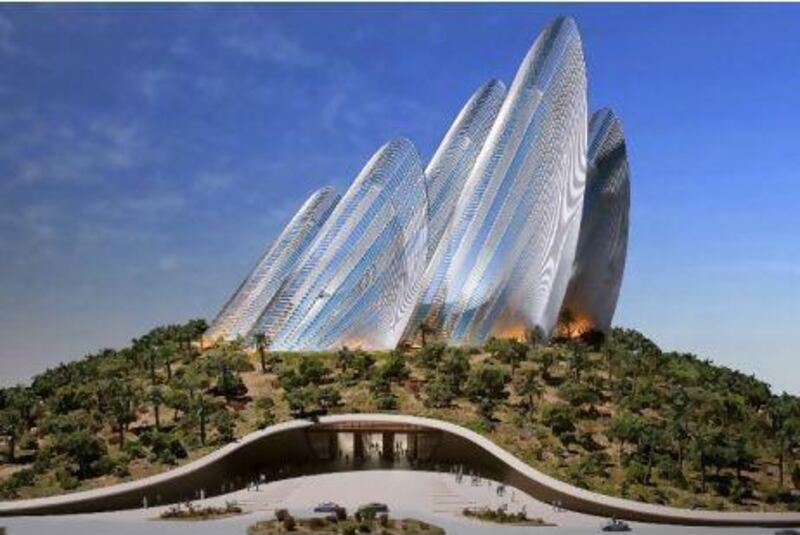The founders of a new Middle East chapter of the American Institute of Architects (AIA) hope to increase the ethics and design standards in the region.
"Some of the restraints found in other parts of the world weren't here," said Thierry Paret, a senior associate with the technical support services company AECOM and the first president of the Middle East AIA chapter.
The AIA is a professional organisation with no formal role in planning or regulation. But it can play a key part in training and raising awareness of a variety of issues that are often left out of the design dialogue, including disabled access to buildings, fire safety standards, sustainability and space-planning efficiency, the group's members say.
The skyline of Dubai, where flashy design sometimes seems to trump function, is a prime example of why more oversight of architecture is needed, they say.
"In 2008 [architects] just had to get things built as fast possible," said Hisham Youssef, the senior associate of the architecture group Gensler and director of the chapter. "A lot of things fell through the cracks."
The formation of the group comes at a time when many architects are closing offices and laying off staff in the UAE in the wake of the construction slowdown.
"This is a shakeout," said Adam Kushabi, a project manager with Aldar who is serving as the chapter secretary. "The need to provide better service, more value for the money, more quality - that's what brings us together."
The Middle East group, founded two months ago, is only the fifth AIA chapter outside the US. In addition to the UAE, it covers Algeria, Bahrain, Egypt, Iraq, Jordan, Kuwait, Lebanon, Libya, Morocco, Oman, Qatar, Saudi Arabia, Syria, Tunisia and Yemen.
So far, 65 architects from around the region have joined. It follows the creation last year of a Gulf chapter of the Royal Institute of British Architects, which shares similar goals.
There is a definite need for these groups, said Yasser Elsheshtawy, an associate professor at United Arab Emirates University.
"I think it is important to the region in general," said Mr Elsheshtawy, who is not affiliated with the AIA.
An AIA chapter can help address a need for cohesion in planning, the interaction between projects that can be lacking in the Middle East, he said.
"Being aware that something like [planning] is needed is really critical," Mr Elsheshtawy said. "So many buildings are going up with no sense of harmony between them."
It is not the AIA's role to judge the appropriateness of architectural style, the architects emphasise. But the group can help developers and planners to incorporate elements of the best designs.
"I don't see anything wrong with iconic buildings," said Mr Paret. But "iconic" buildings work better when they include the best elements of efficient and sustainable design, he said.
The AIA can also play a role in addressing the ethics of the industry, architects say. Misrepresentation of credentials, conflicts of interest and taking credit for other people's designs are common complaints in the region.
The slowdown in the market provides the industry with a chance to discuss issues that were ignored in the frantic construction pace of recent years, Mr Paret said.
"It's an opportunity to regroup and have more influence than five years ago," he said.
Early AIA plans call for public forums on design issues and an awards programme to highlight projects that represent the best planning practices.
The group has formed an alliance with the architecture school at the American University at Sharjah.
"We're looking to have a lot of interaction with the next generation of architects," Mr Paret said.






